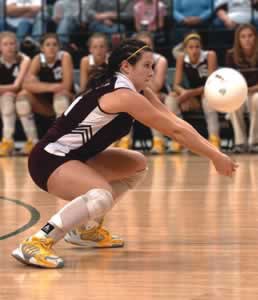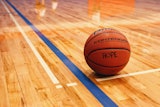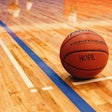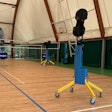Europe's replacement of the DIN standard with a new, comprehensive guideline is bound to send shock waves across the Atlantic Ocean.

Since then, North American sports surfacing manufacturers have designed and marketed their products to either meet or exceed DIN standards of force reduction, ball rebound and other performance characteristics. Nevertheless, in recent years some industry observers - including this magazine (see "Continental Divide," July 2004, p. 84) - have questioned the wisdom in applying to maple gym floors in, say, Bloomington, Ind., a performance standard originally intended for rubber surfaces installed atop concrete pads in a Berlin "sport hall."
Among the skeptics has been Paul Elliott, the technical contact for ASTM International's F08.52 committee, which has standards-development responsibility for indoor sports surfaces in the United States. One can't fault Elliott for that; it's in his nature. In both his ASTM role and his day job as president of ASET Services Inc., a sports surface testing and engineering services company, Elliott takes it upon himself to scrutinize and suggest improvements to the sports surface industry's existing standards, as well as help critique new concepts.
Thus, it's with confidence that Elliott, who two years ago stopped just short of calling on his ASTM colleagues to develop a unique North American guideline, says this regarding the new EN (European Norm) 14904 standard - which, when published in July, effectively replaced DIN as the rule of thumb: "In my opinion, the new EN standard is all encompassing enough that it may reduce a real need for the U.S. market to have its own standard."
Come again?
"The new standard allows for more types of surfaces," Elliott continues. "It also includes a wider range of uses, cultures and economic models, whereas the DIN standard was based only on German culture and economics."
In fact, the EN standard is a product of the 29-nation European Union, which, in essence, compromised with German standards-makers several years ago by allowing the issuance of the DIN 18032-2 "pre-standard," a slightly tweaked version of the previous 1991 edition. At the time, EU leaders anticipated the pre-standard would serve as the forebear to a more comprehensive sports surface guideline that could be agreed upon by all EU member countries. As it turned out, they were right. Says Elliott, "The EN standard has trumped DIN."
The EU and its standards-writing body, the Central European Norms (CEN) committee, are giving manufacturers on that continent until 2008 to bring their products in line with the new standard's specifications.
In the meantime, North American sports surface manufacturers would be wise to familiarize themselves with those new specifications. For instance, missing from the EN standard is one critical testing component that has challenged wood floor manufacturers for years. Area indentation is one of two methods used to measure a floor's ability to perform efficiently when athletes are in close proximity to each other. "That is the hardest factor for an American maple wood floor system to pass," says Elliott. "Within the industry, I estimate that 15 percent of the systems meet all the requirements of DIN. But 30 or 40 percent of the systems meet most of the requirements of DIN and the one that they miss most often is area indentation."
With the area indentation figure thrown out of the equation, Elliott expects wood floor manufacturers to invest considerably in improving and marketing an entire catalog of systems that they previously relegated to what he calls a "secondary class." Benefiting most from this development are facility operators, who in past years could make only one of two purchasing choices.
"The EN standard will better allow people within a budget constraint to get the best floor they can," says Elliott. "Before you were either in the DIN-certified budget category or you weren't. And if you weren't, you didn't have any official way of comparing the performance of one floor to another if those floors didn't meet the DIN standard. Now you'll be able to get a report - an actual performance certificate - and know what the floor does. You'll have the ability to select based on performance, which was harder to do before."
This is because the EN standard separates floors into four types - each of which is more specifically defined by four distinct performance thresholds for force reduction and vertical deflection - affording facility operators increased latitude in choosing floors based on specific characteristics. "For lack of a better word, DIN was offered as one size fits all - but it didn't," says Elliott. "The EN standard allows people who have a penchant for a floor that's geared a little bit more toward basketball than multipurpose use to say, 'I can give up some of the vertical deflection number or I can give up some of the force reduction number.'"
Such options may become available to facility operators by as early as next year. Says Elliott, "Once manufacturers are educated about the EN standard, they will be able to better tailor floors to customers' needs."




































